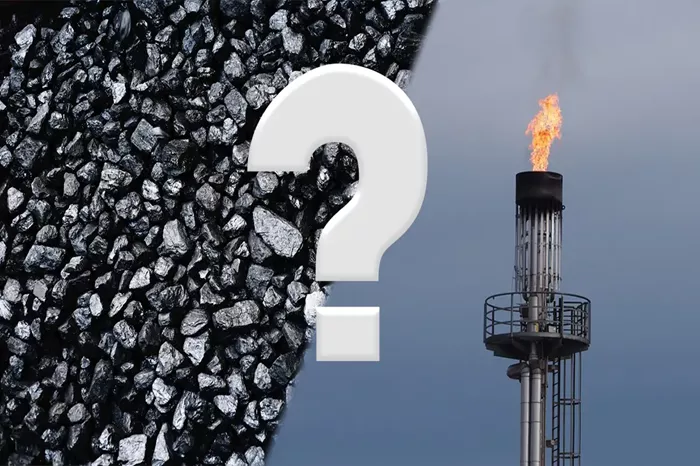As the global demand for energy continues to surge, the debate over the cleanest and most efficient energy sources intensifies. Natural gas and coal are two of the most widely used fossil fuels, each with its own set of advantages and disadvantages. This article delves into the comparison between natural gas and coal in terms of environmental impact, focusing on which fuel is cleaner. It examines the emissions associated with each, their effects on climate change, and the potential benefits and drawbacks of their use.
The Basics of Natural Gas and Coal
What is Natural Gas?
Natural gas is a fossil fuel consisting primarily of methane, a potent greenhouse gas. It is found in underground rock formations or associated with other hydrocarbon reservoirs. Natural gas is extracted through drilling and hydraulic fracturing, commonly known as fracking.
Composition: Primarily methane (CH4), with small amounts of other hydrocarbons such as ethane, propane, and butane.
Extraction Methods: Drilling and hydraulic fracturing.
Uses: Electricity generation, heating, and as a fuel for vehicles.
What is Coal?
Coal is a combustible black or brownish-black sedimentary rock formed from plant matter that has been subjected to high heat and pressure over millions of years. It is primarily used for electricity generation and as a raw material in various industrial processes.
Types of Coal: Anthracite, bituminous, sub-bituminous, and lignite.
Extraction Methods: Surface mining and underground mining.
Uses: Electricity generation, steel production, cement manufacturing.
Emissions and Environmental Impact
Greenhouse Gas Emissions
Natural gas is often touted as a cleaner alternative to coal because it emits less carbon dioxide (CO2) when burned. However, methane, the primary component of natural gas, is a much more potent greenhouse gas than CO2.
CO2 Emissions: About 50% less CO2 than coal when burned for electricity.
Methane Leakage: Methane can leak during extraction and transportation, contributing significantly to greenhouse gas emissions.
Lifecycle Emissions: When considering the entire lifecycle, including extraction, processing, and transportation, natural gas may not be as clean as it appears.
Coal
Coal combustion is one of the largest sources of CO2 emissions globally. It also releases other harmful pollutants.
CO2 Emissions: Coal combustion releases about twice the CO2 of natural gas per unit of energy produced.
Other Pollutants: Coal burning emits sulfur dioxide (SO2), nitrogen oxides (NOx), and particulate matter, which can lead to acid rain, smog, and respiratory issues.
Mercury and Heavy Metals: Coal combustion releases mercury and other heavy metals into the environment, posing a risk to human health and wildlife.
Impact on Air Quality
Natural Gas
Lower SO2 and NOx Emissions: Compared to coal, natural gas produces lower levels of SO2 and NOx, contributing to better air quality.
Particulate Matter: Natural gas combustion generates fewer particulates, reducing the impact on human health and the environment.
Coal
High SO2 and NOx Emissions: Coal plants are significant sources of SO2 and NOx, which contribute to the formation of ground-level ozone and fine particulates.
Health Effects: Exposure to pollutants from coal combustion can lead to respiratory diseases, heart conditions, and other health problems.
Water Usage and Pollution
Natural Gas
Water Usage: Hydraulic fracturing requires substantial amounts of water, which can strain local water resources.
Water Pollution: The process of extracting natural gas, especially through fracking, can lead to groundwater contamination if not managed properly.
Coal
Water Usage: Coal mining and washing require large volumes of water, affecting local water supplies.
Acid Mine Drainage: Coal mines can produce acid mine drainage, which contaminates nearby waterways and harms aquatic life.
See also: 4 Reasons Why Natural Gas is Considered Clean Fuel
Advantages and Disadvantages
Advantages of Natural Gas
Lower Carbon Footprint: Natural gas combustion releases fewer CO2 emissions compared to coal.
Efficient Energy Production: Modern natural gas power plants are more efficient than coal plants.
Flexibility: Natural gas can be used in various sectors, including residential, commercial, industrial, and transportation.
Disadvantages of Natural Gas
Methane Emissions: Methane leakage during extraction and transportation reduces the environmental benefits of natural gas.
Water Consumption: Fracking requires significant water use and poses risks of contamination.
Infrastructure Requirements: Expanding natural gas use requires investment in pipelines and storage facilities.
Advantages of Coal
Abundance: Coal is abundant and widely available, providing a stable supply of energy.
Economic Benefits: Coal mining and power generation provide jobs and support local economies.
Energy Security: Coal reserves are distributed across the globe, reducing reliance on imports.
Disadvantages of Coal
High CO2 Emissions: Coal is a major contributor to global CO2 emissions.
Environmental Degradation: Mining and burning coal have significant environmental impacts, including habitat destruction and pollution.
Health Risks: Pollutants from coal combustion pose serious health risks to humans and wildlife.
Technological Innovations
Carbon Capture and Storage (CCS)
CCS in Gas Plants: Carbon capture technologies can reduce emissions from natural gas plants, although they are still in the early stages of development.
Coal
CCS in Coal Plants: CCS technologies have the potential to significantly reduce emissions from coal plants, but they are costly and not widely implemented.
Renewable Energy Integration
Natural Gas
Bridge Fuel: Natural gas is often seen as a bridge fuel to a renewable energy future due to its lower emissions and ability to complement intermittent renewable sources like wind and solar.
Coal
Declining Role: As renewable energy sources become more cost-effective, the role of coal in the energy mix is expected to decline.
Conclusion
While natural gas is often considered a cleaner alternative to coal, the full environmental impact of each must be assessed. Natural gas emits fewer pollutants and less CO2 when burned but can contribute significantly to greenhouse gas emissions through methane leakage. Coal, on the other hand, is a major source of CO2 and other harmful pollutants but remains a crucial energy source in many parts of the world. The future of energy production lies in balancing the use of these fossil fuels with the advancement of renewable energy and carbon capture technologies, ultimately aiming for a cleaner, more sustainable energy landscape.
Related topic:
Why Do We Liquefy Natural Gas?

